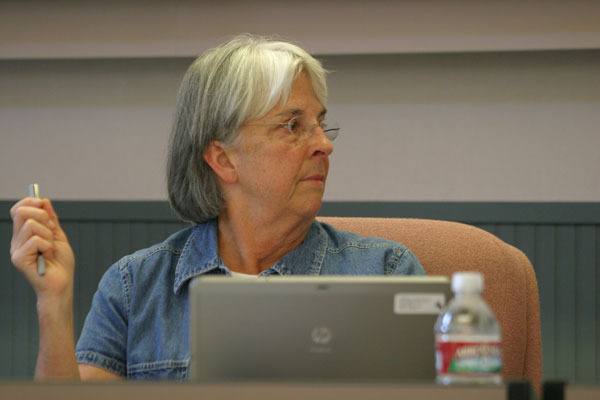Fewer students means less money for the South Whidbey School District next year, about $200,000 less.
The school district eliminated a handful of teaching positions to soften the blow of what originally was $1 million in cuts. Reductions totaling $300,000 to classified staff such as para educators and support were also made, as was the termination of the district’s transportation and maintenance supervisor. This coming school year, the district has $14.9 million to work with after the school board unanimously approved the budget, 4-0. Board Chairman Steve Scoles was absent at the board’s business meeting last Wednesday night.
Part of the budget includes the contracts with the district’s principals and school directors, which were approved at the meeting, too. District Superintendent Jo Moccia said the contracts save the district in health insurance costs, which pleased one multi-term school board member.
“This is moving us where we’ve wanted to go for quite some time,” said Board Member Fred O’Neal. “Which is across-the-board equity for health insurance.”
Another change for next year will be the purchase of three school buses. The 77, 36 and 20-passenger buses will roll on the South End for the 2013-2014 school year. Board member Damian Greene asked Dan Poolman, the district’s assistant superintendent who also handles the transportation director duties, what the deciding factors were between the Class C purchases South Whidbey will make and Class D options. Class D buses, according to the state Office of the Superintendent of Public Instruction, have the service entrance door ahead of the front wheels.
“We felt like we didn’t need more of those (D) models,” Poolman said, adding that the district owns six Class D buses.
As a cost-saving measure, the district has consolidated some of its operations and facilities. The District Office on Camano Avenue, which housed the superintendent, business office and human resources, will be vacated and relocated to the transportation center on Maxwelton Road. Also, the two-story building at Langley Middle School is being closed and will be available for rent this fall.
Bayview School, the district’s alternative high school, was reconfigured into a kindergarten through 12th grade alternative education program. It relocated to the South Whidbey Primary Campus. The way the new alternative program, called South Whidbey Academy, will be classified helps the budget because it will be counted toward regular instruction.
“It works out dollar-wise to be very similar,” Poolman said. “It’s just a different reporting system to the state.”
In the budget presentation Poolman offered, the district projects $50,000 less from its local levy, giving it $3.8 million. The biggest hit to the district’s coffers came from the state’s reduced apportionment funding, which is directly tied to enrollment numbers. South Whidbey will be $500,000 lighter based on lesser enrollment alone, which gives the school district about $7.3 million from apportionment.
As the district’s student body shrinks, so will its program participation. Poolman estimated that 27 students will enroll in Running Start, which puts high school juniors and seniors in college courses so they may graduate high school with an associate’s degree as well as a high school diploma. In previous years, Running Start numbers fluctuated between 35 and 28 students.
“If you only have 200 juniors and seniors instead of 400, the pool’s going to be smaller,” Poolman said.
A bit of accounting will help the district make up its budget difference, too. The district will transfer $267,000 from its debt service fund to its revenue budget.
“That’s fine, we have no debt,” Poolman said.
Of the district’s $14.9 million budget, 59 percent will be spent on teaching activities which include teachers, para educators and materials. The district’s reported expenses for next year totaled $18.4 million, however $3 million will be for capital projects such as the district-wide energy efficiency repairs and upgrades, an iPad and iPod pilot program with a handful of classes and the purchase of three buses.



